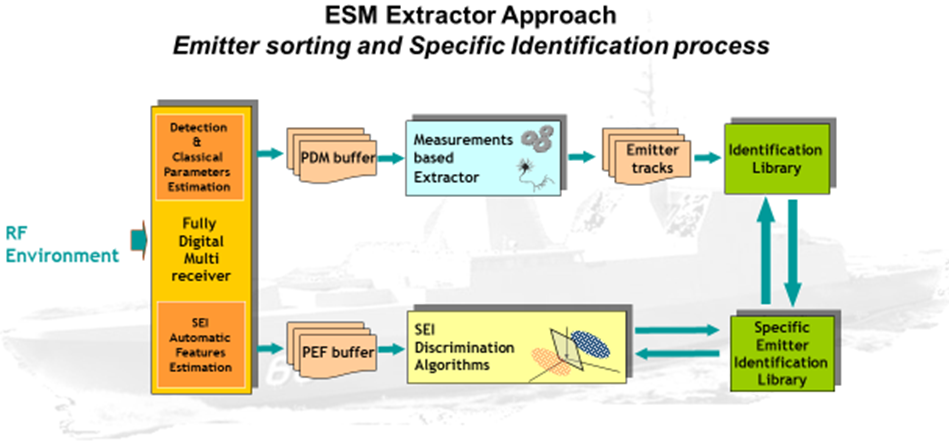Radar Electronic Support Measures (RESM)
The Radar Electronic Support Measurement (RESM) equipment usually is consisting of two parts: Radar ESM (RESM) and Communications ESM (CESM), due to the different surveillance bandwidth and relevant equipment structure (antennas and receivers types).
ESM equipment are aboard of all the military platforms (aircraft, ships, comprising submarines) and armoured vehicles (such as tanks and soldier vehicles groups) to provide alert and begin protection from threat.
The RESM, through the detection and signal analysis of the gathered emitter electromagnetic radiations, compares the signal characteristics with a library of technical and operational data of the emitters in order to identify them and provide the relevant alerts. This process is called “Emitter Sorting and Identification Process”.
RESM systems remain electronically silent during their operation.

Figure 1: Example of RESM deployment onboard HELO
The RESM platform (except against Low Probability of Intercept Radars [1] (LPIR)) usually has a range advantage factor (RAF) with respect to a radar in the detection of its platform (the radar detection range) because of the two-way propagation for the radar to receive the platform echo notwithstanding the quite large radar transmitted power.
RESM detection of LPIR involves the addition of high gain antennas (phase arrays or parabolic dish antennas) to compensate for the very low power (but quite long duration) of the LPIR signal.
Typical technical characteristics required for RESM equipment are:
- Wide e. m. spectrum (total bandwidth) capability (typically 0.5 to 40 GHz for RESM
- Wide dynamic range (60 to 80 dB), to acquire all type of signals,
- RAF>1
- Advanced Digital Signal Processing to discriminate/characterise the signal of interest from the other ones at nearby frequencies and to evaluate its shape parameters (bandwidth, time/frequency modulations, duration, repetition intervals, etc.) necessary to compare the intercepted data with the Emitter Library data
- Quite-accurate angle-of arrival measurement to locate the transmitter bearing.

Figure 2: RESM Processing







